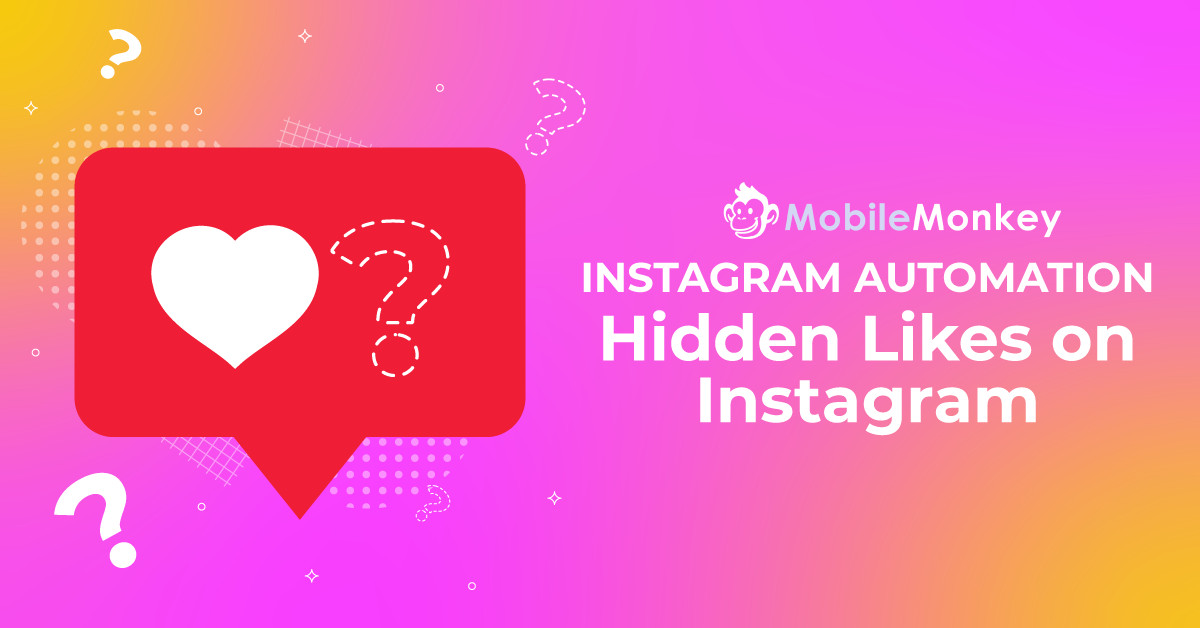It’s been over a month since “hidden likes” options on Instagram rolled out to all Instagram users. Has the brand account you manage noticed a change?
First, what are hidden likes?
In April, Instagram gave users the option to show or hide the like counts on their posts.
Instagram’s move was made in an effort to decrease bullying on the platform and lead to a less pressurized experience. While that’s a great goal, actually hiding likes has led to some pretty mixed reviews.
That’s because likes are Instagram’s currency. If you’re an influencer, or if you’ve used influencer marketing to boost your brand in the past, you understand how important it is to post content that people engage with.
And if likes are gone, what will replace them?
The good news is, there are solid ways to measure your posts’ effectiveness — even without likes.
In this article, you’ll learn…
- How to find hidden likes on Instagram
- If hidden likes will hurt influencers
- The 3 different metrics you can use to replace hidden likes
GET NEW INSTAGRAM TOOLS FROM Customers.ai
Grow Instagram followers and engagement with new tools for influencers, artists, brands and D2C businesses. Sign up to be the first to use tools that generate elite engagement via Instagram DMs.
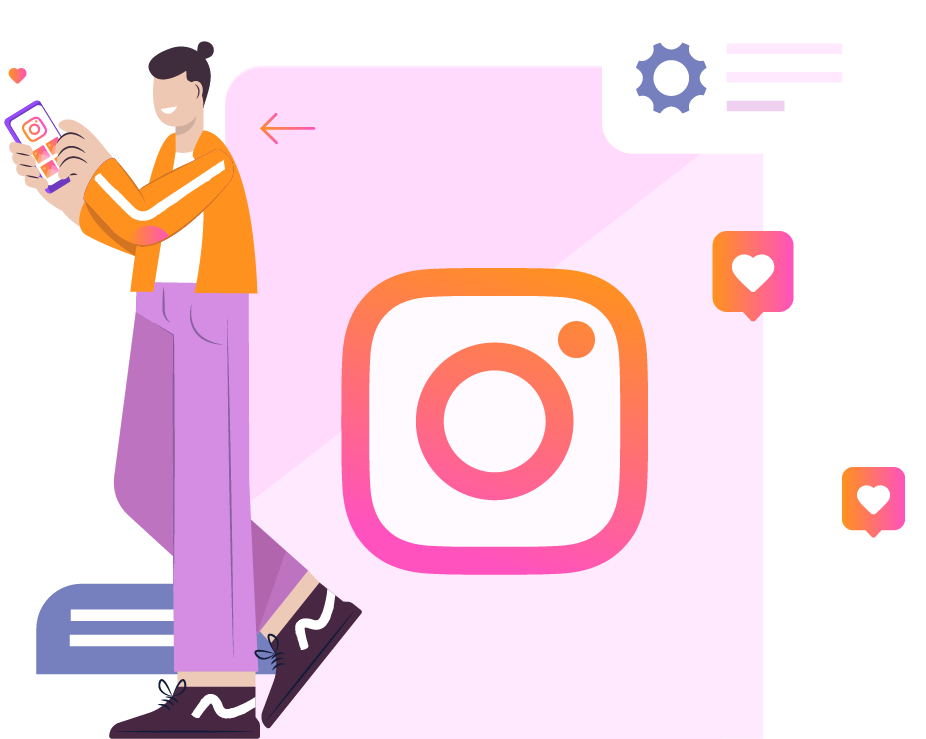
If a like-free experience sounds great — or if you just want to see what all the fuss is about — toggling the show/hide likes feature on Instagram is pretty easy.
First, go to your profile. Click on the hamburger menu in the top right corner. From there, select “Settings” and click “Privacy.”
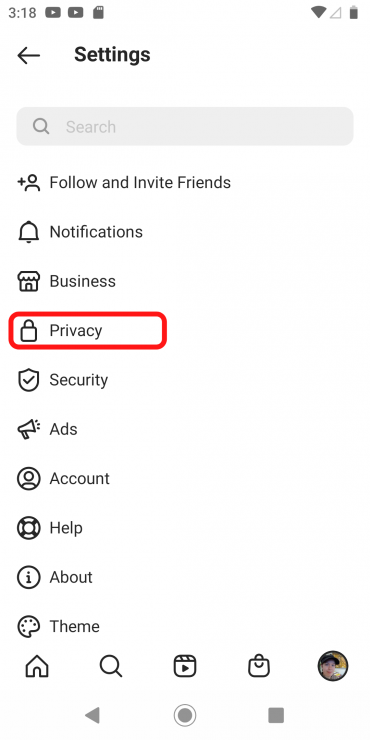
Under “Interactions,” click on “Posts.”
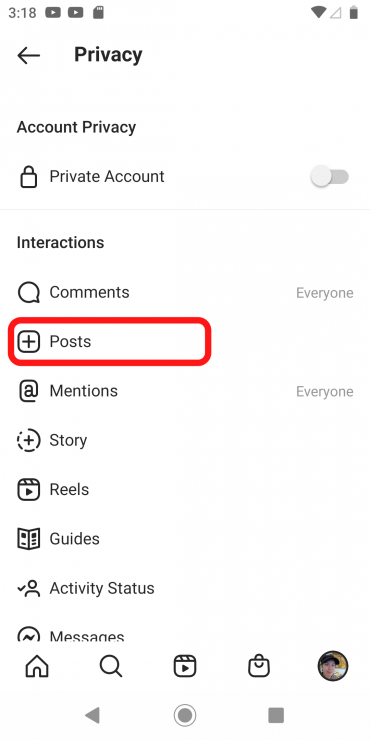
You’ll see an option to hide like and view counts, which you can toggle on or off.
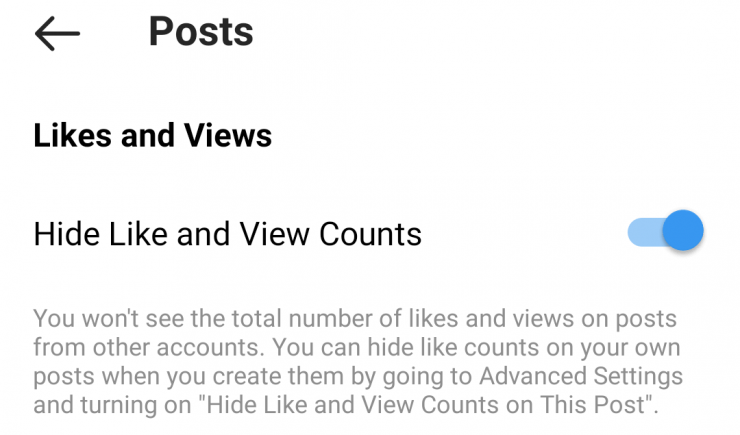
When likes are hidden, you’ll still be able to show your appreciation with a double-tap. But, instead of seeing the total number of likes under the post, you’ll just see “Liked by [Instagram_user] and others.”
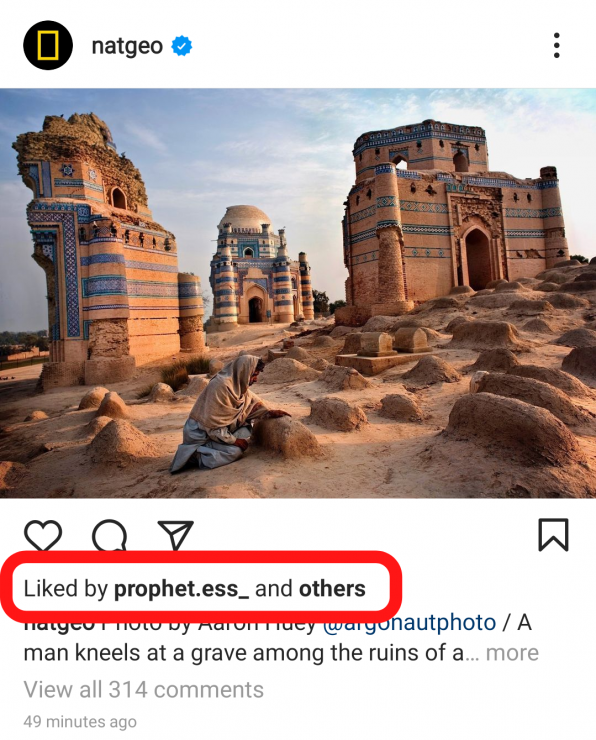
If you click “others,” you’ll see a list of everyone who liked that photo. You could scroll through and count them…if you wanted to. (Frankly, I don’t know anyone with that sort of time.) Or, you could go back to your settings and turn likes back on.
When you publish a post, you’ll have the option to hide likes or not. If you want to hide likes on an existing post, just select it, click on the three dots at the top right, and click “hide like count.” You can unhide likes the same way.
If you do that, you’ll be able to see the total number of likes on your post when you click “Liked by [user] and others.”

This means that influencers and brands won’t be in the dark about their like count — only their followers will.
Of course, whenever you tell people they can’t see something, someone will always find a workaround. And right now, it’s not much of a workaround at all.
That’s because Instagram hasn’t yet made hiding likes a possibility on desktop. So, if you’re dying to know the secret behind the mysterious “and others,” simply hop over to Instagram.com on your PC or laptop and view the post there.
So, why did Instagram decide to hide likes in the first place?
Back in November of 2019, Instagram experimented with hiding likes for everyone. They hoped that this, along with adding new safety features, would stop cyberbullying and lower peer pressure.
This March, a testing bug led to thousands of users accidentally getting a like-free experience ahead of time. Since then, there’s been a visible divide between people who, well, liked it, and people who didn’t.

Source: Twitter

Source: Twitter
While some users enjoyed their new depressurized experience, others — especially small businesses and influencers — worried that taking away like counts would make it hard to figure out what content resonates with their audience.
So what actually happened? Are hidden likes hurting influencers or not?
Well, because it’s only been a month since the optional hidden likes feature dropped, we still have to wait and see. (If you’ve noticed a significant change, let us know in the comments below!)
But we do have statistics from the 2019 testing period, which include a few eyebrow-raising numbers.
According to research by #paid, an influencer marketplace platform that connects brands with influencers, over half the creators in this study saw their likes fall. For a fifth of them, the change was “drastic.”
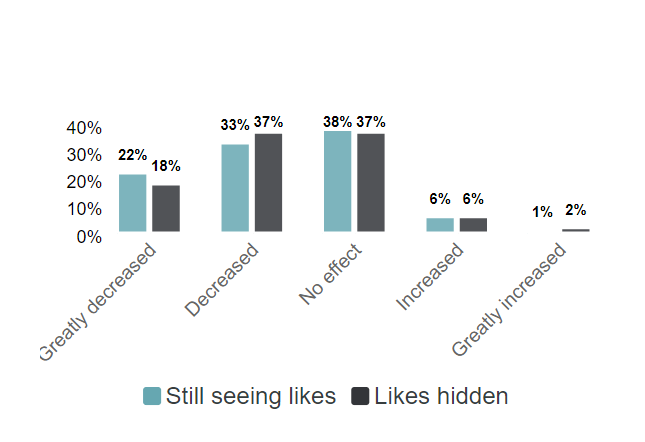
Source: #paid
As one influencer said, “If likes aren’t seen, people are less likely to ‘like’ thinking this is irrelevant.”
The same study found that a third of creators received less comments on their posts. This could be because posts with a high like count can inspire users to click through to the comments and join the conversation.
The entire study is fascinating, and well worth a read. It’s also important to remember that these stats reflect the zero-likes testing period, where 50% of Instagram users couldn’t view likes and 50% of users had to view them all the time.
Now, things are different. People can choose whether or not to hide likes, so engagement rates may not change as drastically.
On the bright side, there’s a chance that hidden likes on Instagram may bring the shady practice of buying fake likes to an end. That’s a definite positive, especially when you consider that fake accounts cost brands $1.3 billion in 2019.
The long and short of it is that hidden likes are going to impact the Instagram experience in one way or another. While we don’t know yet whether that’s good or bad, hidden likes are a good reminder not to lean too heavily on any given metric as a signal of success.
For brands and influencers trying to figure out a post-hidden-likes way to calculate engagement, here are three other metrics you can turn to.
Even though likes are important, they aren’t the end-all-be-all of Instagram engagement. Here’s three other metrics that tell you whether your posts are performing:
1. Comments
Let’s be honest — likes are the lowest-effort form of online praise. Comments, on the other hand, show a lot more interest.
After all, comments mean that your followers are taking time to think of something to say, type it out, and worry for several minutes over whether or not you’re going to take their praise the wrong way (or maybe that’s just me). Then they have to actually post the dang thing.
Besides, comments are a great way to get feedback from followers that goes beyond “I liked this” or “I didn’t.” And, you can use them to drive conversions!
For example, try offering a freebie or discount to everyone who comments on a specific post. That’s a simple way to drive engagement and figure out who’s interested in your latest offers.
You can even automate your follow-up to comments with Customers.ai’s Comment Bot feature, which means you no longer have to spend hours sifting through comments and messaging your followers manually.
Simply ask people to comment a keyword if they’re interested — “Marketing,” for example — and they’ll instantly receive the promised freebie in their inbox.

It’s a three-for-one solution:
- More comments for you!
- More conversions from Instagram
- And (as you’ll see in a moment) more direct messages, which are very influential within the algorithm.
2. Direct messages (DMs)
Direct messaging is an extremely underrated form of marketing.
Like comments, they show Instagram that your content actually gets people talking to you. And, when a follower DMs you, that gives you the opportunity to connect with them on a person-to-person basis.
Not only does Instagram value high-quality DMs so much that they can actually boost you within the algorithm, but DMs are also an effective way to close more sales, direct followers to an outbound link, grow your email list, and more.
For example, imagine one of your followers DMs you to say hi or ask a question. With a tool like InstaChamp, you can instantly follow up with an auto-reply sequence that offers a promo code or freebie in return for an email address.

Your follower takes the offer, and just like that, you’ve made a sale and grown your email list.
You can boost your DMs through a variety of methods. This includes asking people to comment under a post to get a DM-freebie, setting up auto-DMs, and rewarding people for @mentioning you in their Stories by DMing them with a promo code, to name a few.
To see this DM strategy in action, say hi to us at @Customers.ai over on Instagram! (Make sure you’re using the Instagram mobile app.)
DMs and comments are much more personal than likes, and as such, they’re a much more valuable form of engagement.
The reason is that they lead to the most important engagement method of all, especially when it comes to measuring an influencer’s impact on your business: traffic and sales.
3. Traffic and sales
Most brands don’t want to blow up on Instagram just because it’s fun. (It is fun, but that’s a bonus, not the goal.)
The goal is to grow your business through web traffic and sales. If your Instagram strategy isn’t doing that for you, it’s not much of a strategy.
So, instead of analyzing an influencer’s like counts or your own account post likes to see if they are growing your business, try measuring the direct impact of Instagram engagement on traffic and sales.
A few ways to do this:
First, use a dedicated discount code for Instagram and your Instagram influencer partners to promote. Make sure no one else is promoting this code, inside your organization or out of it.
Then when your promotion is over, measure how many sales you made using that code. That will show you exactly how much impact this influencer made.
Second, when you’re using automation to send URLs to people who post comments and send you DMs like we discussed above, use tracking codes like UTMs to see the source and campaign of traffic to your website. Then, use web analytics to measure how well it’s converting.
Third, if you’re running a sale, create Stories and posts that let people know they can DM you for a promo code. From there, measure how many sales came from that code alone.
Customers.ai’s Instagram tools can help you do this by automating your DMs. This way, you don’t have to respond to every single comment, DM, and Story mention by hand — which would take hours.
Instead, you can set up an automatic chat flow inside InstaChamp that will take care of all this for you. You’ll save hours, and it’ll make testing these alternate forms of engagement much simpler.
In the end, hidden likes on Instagram may be a blessing. They’re the lowest-effort form of engagement, they’re easy to fake, and they don’t start conversations.
By contrast, focusing comments and DMs puts you in touch with your followers. They show Instagram that your content matters. And most importantly, they directly impact traffic and sales.
To jumpstart engagement in your comments and DMs, explore InstaChamp’s many features to see how we can help.
In the meantime, we’d love to know your experience with Instagram’s new optional-likes update.
Have you noticed a change in engagement? How do you think optional likes will affect Instagram marketing in the future? And do you think that likes are a good way to measure engagement in the first place?
Let us know in the comments.
GET NEW INSTAGRAM TOOLS FROM Customers.ai
Grow Instagram followers and engagement with new tools for influencers, artists, brands and D2C businesses. Sign up to be the first to use tools that generate elite engagement via Instagram DMs.

